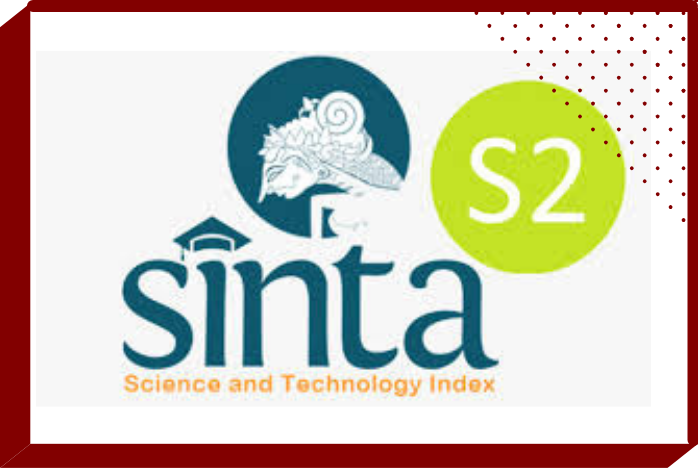Konvergensi dan Tipologi Makna Humor sebagai Konstruksi Konteks Komunikasi Ala Gen Z: Perspektif Ekolinguistik
 Abstract views: 146
,
Abstract views: 146
,
 PDF downloads: 118
PDF downloads: 118
Abstract
Ecolinguistics perspectives have point of views to analyzing phenomenon from the environment impacts beside humor languages as forms of communication are affected by human society, culture, and the technological environment as a place of communication. This research explores the meaning of convergence and typology humor languages in Gen Z conversation and also the digital environment contextual forms the understanding and reception of humor presented. This study uses quantitative methods to more understand and know society phenomena, culture, and human behavior in depth. Particularly, inside humor language as Gen Z communication construction. The qualitative methods using reading methods to research and collect data with notes technique. The building element in linguistics cannot be left alone without the influence of the social and natural environment around it. There are three building elements in linguistics that are nature’s connection with humans, the setting or environment, and the local wise principles. In the context of Gen Z, ecolinguistics indicates that the digital environment helps to shape the language used in daily life so that the resulting term not only reflects the identity of the generation but also conveys a particular symbolic meaning. New terms produced in the ward not only represent the identity of the generation but also contain symbolic meanings that reflect the pattern of thought and values held including appreciation for nature.
Downloads
References
https://journal.eduartpia.id/index.php/suarabahasa/article/view/31/16.
Chen, Sibo. (2016). “Language and Ecology: A Content Analysis of Ecolinguistics as an
Emerging Research Field”. ELSEIVER: Ampersand, 3, 108—116.
https://www.sciencedirect.com/science/article/pii/S2215039015300229.
Garner, Mark. (2005). Language Ecology as Linguistic Theory. https://journals.ums.ac.id/index.php/KLS/article/view/4485.
Haugen, Einar. (n.d.). (1996). Dialect, Language, Nation1. American Antohropological Association: Wiley-Black Well.
https://alogro.wordpress.com/wp-content/uploads/2010/05/haugen_l_d_n.pdf.
Jurado, J.L., et al. (2024). “Developing Conversational Virtual Human for Social Emoticon Elicitation based on Large Language Models”. ELSEIVER: Expert System with Applications, 246, 1—16.
https://www.sciencedirect.com/science/article/pii/S095741742400126X.
Keraf, A.S. (2010). Etika Lingkungan Hidup. Jakarta: Penerbit Buku Kompas.
Khoirunnisa, K., Umi Kulsum & Dian Roesmiati. “Kejahatan Berbahasa: Potensi Pencemaran Nama Baik dan Kriminalitas pada Berita Palsu Perspektif Linguistik Forensik. Iswara, 3(2), 100—107.
https://jos.unsoed.ac.id/index.php/iswara/article/view/9107/4677.
Kravchenko. (2005). Biology Of Cognition Linguistic Analysis: From non-realist Linguistics to a Realistic Language Science. Frankfrut: Peter Lang.
Lechevrel, Nadège. (2009). “The Intertwined Histories of Ecolinguistics and Ecological Approaches of Language”. Symposium on Ecolinguistics: The Ecology of Science, University of Southern Denmark.
https://shs.hal.science/halshs00413983v1/file/History_of_ecological_approaches.pdf.
Muhlhausler, P. & Alwin Fill. (2001). The Ecolinguistics Reader: Language, Ecology, and Environment. Continuum: London & New York. Diakses pada Jumat, 1 November 2024. https://linguisticstudentindonesia.wordpress.com/wpcontent/uploads/2019/11/alwin-fill-peter-muhlhausler-the-ecolinguistics-reader_-language-ecology-and-environment-2001.pdf.
Fauzi M., & Hemansyah. (2021). "Representasi, Relasai, dan Identitas Undang-Undang Laut: Kajian Ekolinguistik Kritis. Jurnal Ilmu Budaya, 17(2), 131-147. https://doi.org/10.31849/jib.v17i2.6241
Pradita, L.E. & Jendriadi. (2024). “Metafora Bahasa Lokal Magelang dalam Perspektif Ekolinguistik. Journal of Education Research, 5(1), 466—478. https://jer.or.id/index.php/jer/article/view/593/473.
Philips, D., et al. (2024). “Legitimating Language and Emotional Tone in Antenarratives: A Cultural Enterpreneurship Perspective”. ELSEIVER: Journal of Business Research, 186, 1—15.
https://www.sciencedirect.com/science/article/pii/S0148296324004922.
Ramadhani, A. M., Puspitasari, M., Hidayati, A. N., & Dahlan, A. (2023). Hubungan Alam Dan Manusia Dalam Cerita Rakyat Kisah Si Pego Karya Dwi Haryanto (Kajian Ekologi Sastra). https://doi.org/10.33369/diksa
Sugiarti, dkk. (2019). Ekologi Budaya: Studi Ekologi dalam Bingkai Kajian Sastra Interdisipliner. Malang: Universitas Muhammadiyah Malang Press. https://eprints.umm.ac.id/id/eprint/520/1/Sugiarti%20Andalas%20Saraswati%20Kusniarti%20-%20Ekologi%20Budaya.pdf.
Sibarani T., (2014). Ekolinguistik Kebambuan Dalam Masyarakat Bahasa Batak Toba. Medan Makna, 12 (2), 95-104. https://doi.org/10.26499/mm.v12i2.1033
Simanjuntak, Elsa., Dwi Widayati, Amhar Kudadiri. “Pemahaman Remaja terhadap Leksikon Pengobatan Tradisional Kajian Ekolinguistik”. INNOVATIVE: Journal of Social Science Research, 4(5), 1807—1821. https://j-innovative.org/index.php/Innovative/article/view/15154/10220.
Copyright (c) 2024 GHANCARAN: Jurnal Pendidikan Bahasa dan Sastra Indonesia

This work is licensed under a Creative Commons Attribution-ShareAlike 4.0 International License.
Ghancaran: Jurnal Pendidikan Bahasa dan Sastra Indonesia uses an Open Access Policy under the Creative Commons Attribution-ShareAlike 4.0 International License. Authors publishing in this journal agree to the following terms:
- Ghancaran Journal holds the copyright and grants the journal rights for first publication with the work simultaneously licensed under a

The work is distributed under Creative Commons Attribution-ShareAlike 4.0 International License which allows others to share, copy, and redistribute the material in any media or format and adapt, remix, change, and develop the material even for commercial purposes, as long as it is stated credit and license derivative works under similar terms. - Authors may make additional contractual arrangements for non-exclusive distribution of the journal's published work version.
- Authors are permitted to post their work online (e.g., in institutional repositories or on their websites) before and during submission, as doing so may lead to productive exchange.


















